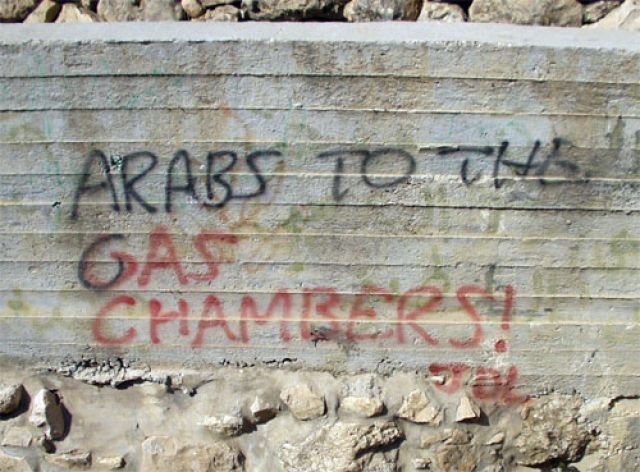
One of the most chilling scenes in the recent SBS mini-series The Promise depicts the plight of some Palestinian schoolgirls in Hebron.
Leaving school in the afternoon, the girls are subjected to abuse and intimidation by settler youths as they walk home. At one point, a settler boy, face contorted with hatred, viciously hurls stones at the group, injuring one.
Meanwhile, as the girls crouch in terror, blase Israeli Defense Force (IDF) soldiers look on, doing nothing to stop the violence until challenged by a young foreign tourist.
The stone-thrower is merely ordered to move on, reluctantly, and there are no recriminations of any kind.
Such incidents occur frequently in Hebron, a religiously-significant city located about 30 kilometres south of Jerusalem in the occupied West Bank.
Divided into two zones, designated H1 and H2, the city is home to 165,000 Palestinians and 500 Jewish settlers.
The settlers occupy a cluster of fortress-like neighbourhoods in the H2 (Old City) sector. About 30,000 Palestinians also live in H2.
So that the settlers can go about their business unrestricted, the rest of the city — particularly H2 — lives in a perpetual state of physical, commercial and cultural lock down.
To be Palestinian in Hebron means to live under a regime of constant soul-destroying harassment. The harassment is carried out by IDF soldiers, Border Patrol units and ultra-fundamentalist settlers, whose sense of entitlement seems to recognise no boundaries.
Hebron is undoubtedly a violent place. But contrary to stories told in the mainstream media, hardly any of the violence is Palestinian in origin (despite the fact that they make up the vast majority of the population). A particularly disturbing feature of settler culture is the role played by children, often very young, in initiating anti-Palestinian violence.
“The usual incidents,” recalls one soldier in Soldiers’ Testimonies from Hebron 2005-2007 (published by Israeli NGO Breaking the Silence), “are when Palestinian children finish school and they have to be protected, because otherwise they get beaten up by the Jewish kids.
“Rough beatings-to-kill are not an everyday occurrence, but definitely throwing small stones. That happens literally every day.”
Many other soldier testimonies paint a similar picture, and nothing has changed since the document was published in 2008. Another informant said Jewish teachers and youth counsellors not only condoned but actively encouraged such activity: “There was this ruling by some rabbi that Arabs are not humans. Some regional rabbi ruled this, and that it was okay to throw stones at them, really okay.”
Stones today, machine gun bullets tomorrow? One soldier who served in Hebron remembers a group of eight-to-nine-year-olds throwing stones at a Palestinian market. They expressed admiration for the mass murderer Baruch Goldstein, who massacred dozens of praying Palestinians at the Cave of the Patriarchs in a notorious 1994 incident.
“All the [settler] kids idolize him,” the informant said.
Spitting in the face of Palestinian passers-by is a regular event often encouraged by settler parents: “I saw a (settler) child, about three years-old walking along the ‘Prayer Route’, and a little Arab child passed him by. Just a little kid. What does he know? Also about three years-old.
“So the (settler) child spits at him thickly, square in the face. Really extreme … And his father walks with him, hand in hand, saying absolutely nothing.”
In another typical incident, a group of looting settler children emerged from a Palestinian shop they had just trashed. They saw an old Palestinian man in the street and, as one soldier remembers, “literally sprayed his eyes with teargas and broke his cane”.
Impunity is the order of the day for violent settler children, who are often sent by their elders to destroy entire houses: “The children kept getting little hammers and simply broke stuff … from a little hole in the wall, you suddenly get no wall at all. With hammers. Children. Dozens of children with hammers. Really determined.
“You hear this tick-tick-tick hammering away at night, you really do … And you know that it’s the parents who send them. You know it all comes from the parents, from the adults. Everything.”
Soldiers do nothing to stop the organised vandalism as their mission is to “protect” the settlers.

However, the same standard of tolerance does not apply to Arab children. One of the most disturbing features of the soldier testimonies is how often Palestinians youths are punished for the most trivial of reasons.
A soldier remembered: “One guy would catch (Palestinian) kids, make them splay their legs flat against the wall, with a metal rod he’d force them, pass it between their legs and go: 'Sing, repeat after me', and they [say]: 'No way, why?'
“They had to shout Hatiqvah (Israeli national anthem) after him … and if they were off the beat, they’d get a blow to the knee with the metal rod. 'Sing exactly as I sing it!' Regularly. Just like that.”
Palestinian children suspected of throwing stones are often abducted, savagely beaten and kicked — bloodied and dazed — out of military vehicles miles from their homes.
It is a testament to the oppressive capacity of the United States-backed Israeli security forces that daily life in Hebron is completely structured around the perceived “needs” of the settlers, a tiny minority who lord it over the surrounding Palestinian population.
An ex-IDF member testified: “Now … the [Palestinian] shops are welded shut, and sprayed over with inscriptions like 'Death to the Arabs', 'Arabs to the Gas Chambers' and other such creative stuff.”
The all-encompassing hatred instilled in many of the settler children — ironically reminiscent of the malevolent swarms of Hitler Youth who tormented German Jewry for sport in the Third Reich — ensures the grotesque morally-inverted nightmare world of Hebron will continue.
“Hebron exists and the world is silent,” as one ex-soldier dealing with his own guilt puts it.